What is the single best strength-building exercise many of us could be doing right this minute but almost certainly are not?
Consult enough exercise scientists and the latest exercise research, and the answer would likely be a resounding: squats.
"For lower-body strength and flexibility, there is probably no better exercise," said Bryan Christensen, a professor of biomechanics at North Dakota State University in Fargo, who studies resistance exercise.
The benefits are not confined to the lower body. "It is really a whole body exercise," said Silvio Rene Lorenzetti, the director of the Performance Sports division of the Swiss Federal Institute of Sport in Magglingen. "It requires core stability and trains the back."
Some people worry that squats can imperil the knees and hips, but the exercise can actually help protect and improve the workings of these and other joints, said Sasa Duric, an exercise scientist in Kuwait, who has studied squats. The movement "helps maintain the flexibility, stability and function" of hips, knees and ankles, he said.
But perhaps most fundamentally, squats are key to living and aging well. “When we clean the house or plant a vegetable garden, we need to squat,” Dr Duric said. Ditto for easing into and out of chairs and lowering ourselves to toddler level for face-to-face playtime.
In essence, according to a 2014 scientific overview, squats are "one of the most primal and critical fundamental movements necessary to improve sport performance, to reduce injury risk and to support lifelong physical activity".
The right way to do a squat
Squatting is simple, portable and potent. “You don’t need a gym,” Dr Christensen said. Anywhere with a few feet of open space will work, whether it’s a living room, office, stairwell, park or closet. And the only necessary equipment is your body weight.
If you are new to squats, one of the safest, simplest ways to start, Dr Duric said, is with what is commonly called a box squat, so named because it is commonly done with an exercise box found in gyms. But you can also do these at home, in which case you’ll be using a chair, stool, bench or bedside.
If you have lower-body disabilities or past injuries, talk to your doctor first about whether squatting is advisable for you. “Be patient and pay attention to proper technique,” Dr Duric said. “Do not rush the squat.”
To get started
Step 1 Find a chair or box high enough that, when you sit on it, your thighs are parallel with the ground. Keep your core tense and your chest up, with your back straight.
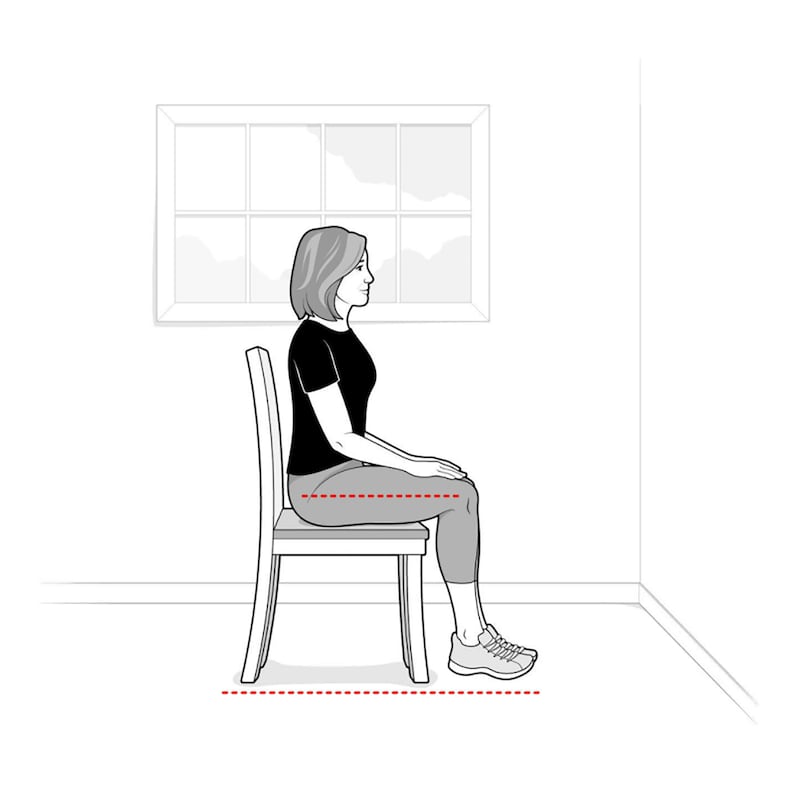
Step 2 Set it a few feet from a wall. The wall's straight lines can help align your body.

Step 3 Stand facing the wall, chair behind you, feet about four inches from the wall. Place your hands on your hips or stretch them to the sides.

Step 4 Keep your heels glued to the ground. Bend your knees slowly, through a count of five, lower yourself until your buttocks gently touch the box. Try not to actually sit. Rise from the box and straighten your legs through another count of five.
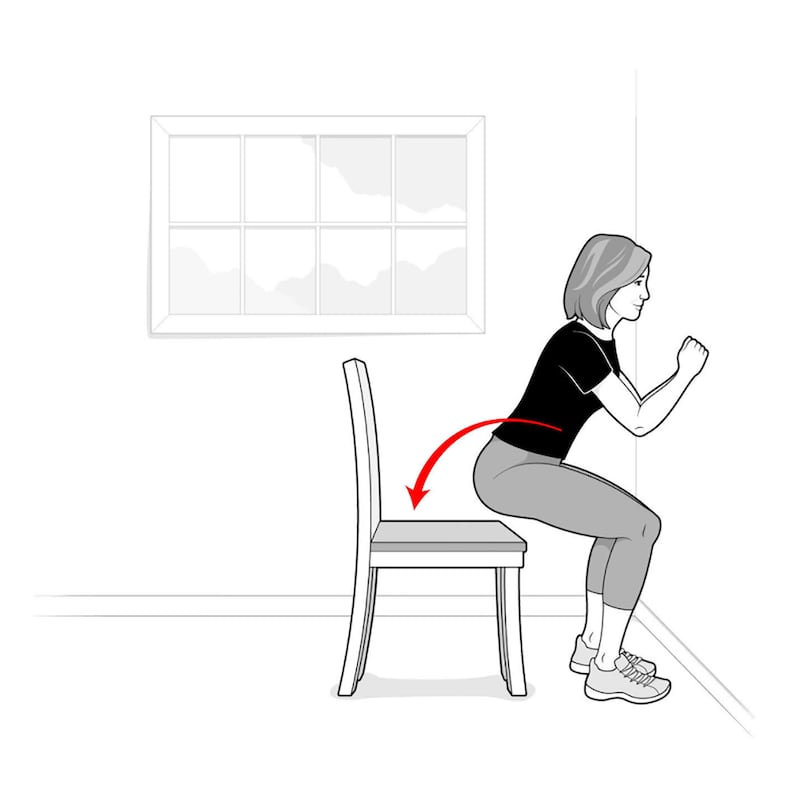
Hold that form
When you feel your box squats dialed in, you can ditch the box or chair and move to a free-standing, body weight squat. But keep paying attention to your form. "Squats are an excellent, excellent exercise, both to enhance functional capacity and reduce the risk of injury – provided the exercise is performed correctly," said Brad Schoenfeld, a professor of exercise science at Lehman College in New York and expert on weight training.
The keys to a safe, effective, body weight squat for beginners, he and the other scientists agreed, are:
Step 1 Situate your feet about shoulder width apart and facing slightly outward, which is the easiest, most stable stance. Keeping your feet considerably wider or closer together or angled too far in or out, places potentially worrisome loads on the knees or hips.
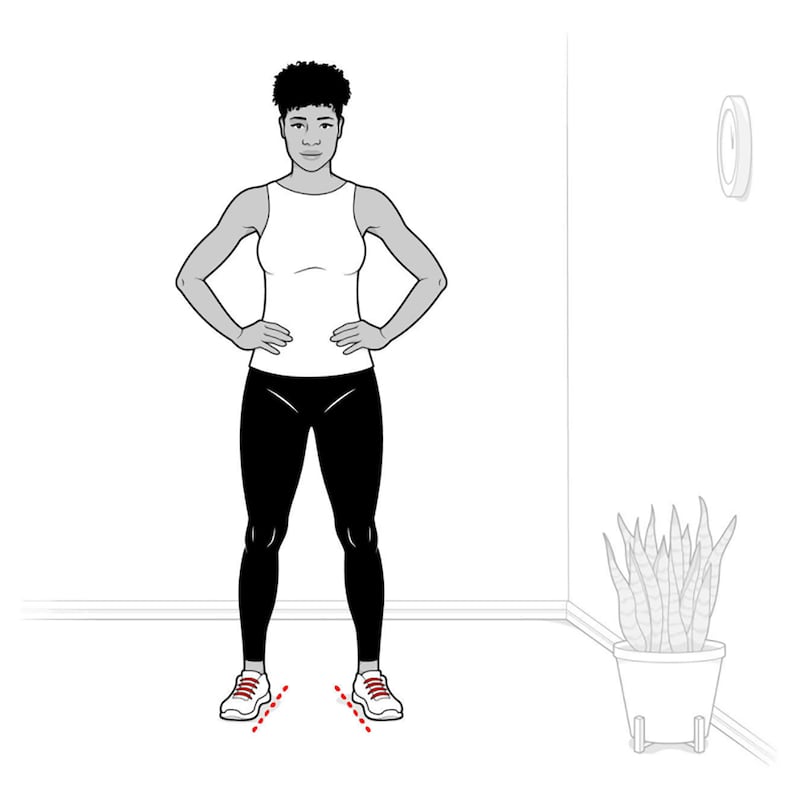
Step 2 Your head and spine should be aligned, chest up, eyes gazing straight ahead. Do not round your back by hunching or arching it.
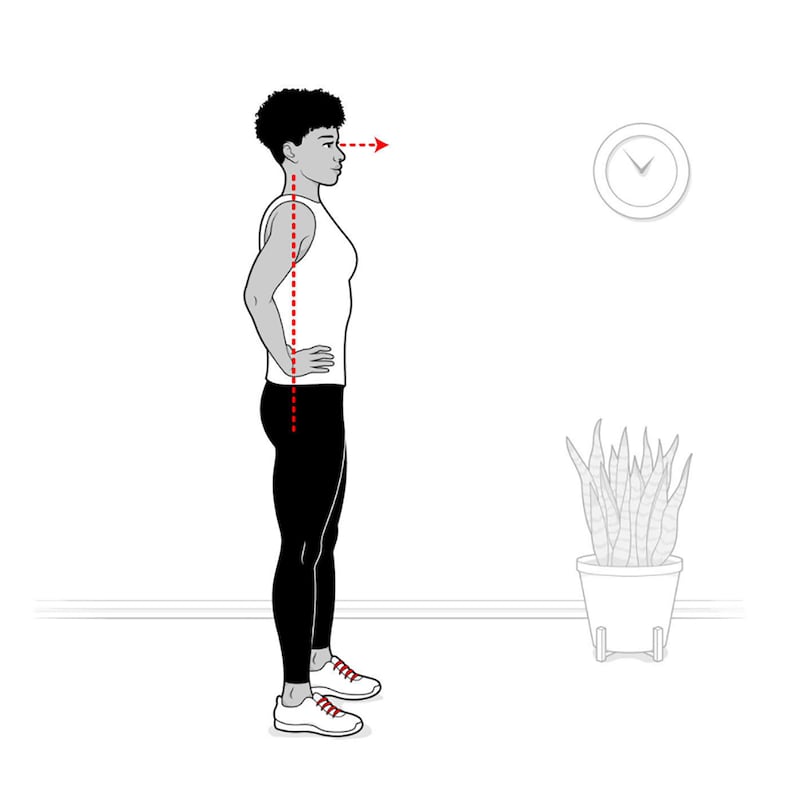
Step 3 Knees should move approximately in line with your toes as you squat – not splayed outward or buckling in – and not extending too far past the ends of your toes.
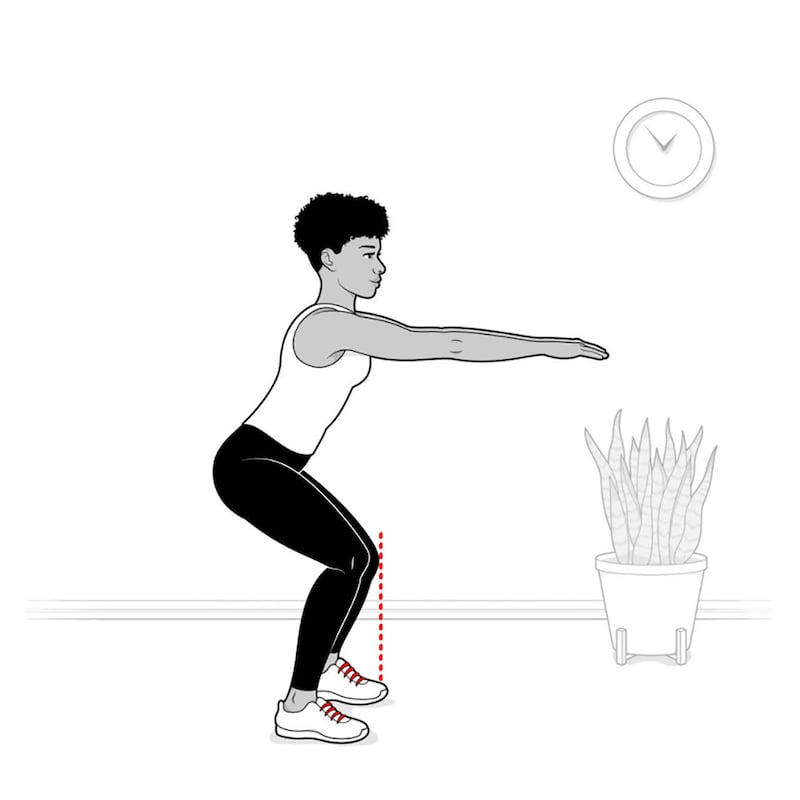
Step 4 Squat as low as comfortably possible. Aim eventually to get your thighs parallel with the ground. But at first, if you cannot get that low, that's okay. It is still a squat.
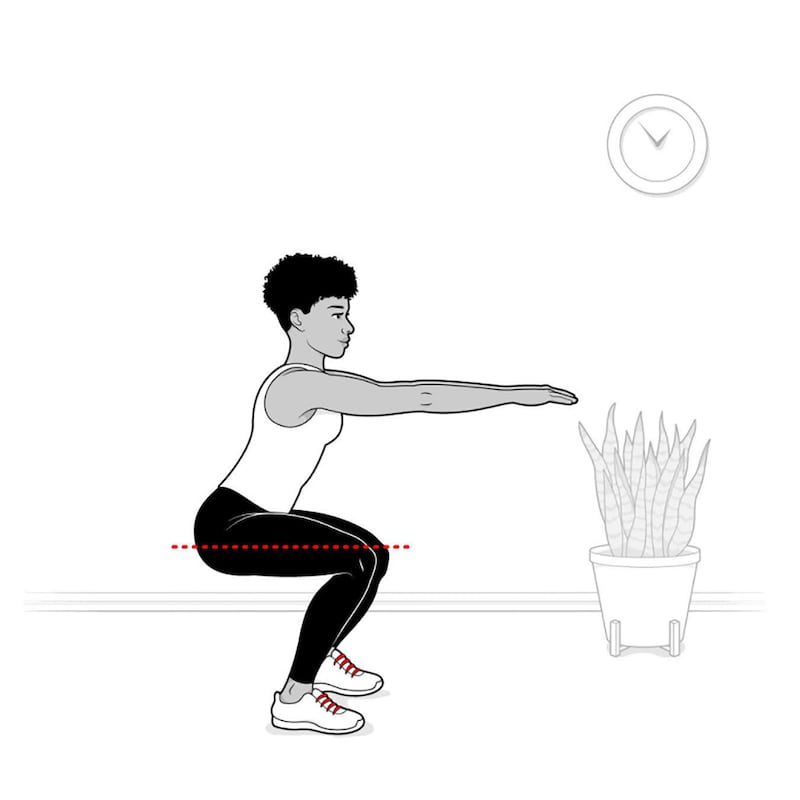
Within these guidelines, experiment to find the movement that feels right for you. “There is no absolute best form for everyone,” Dr Schoenfeld said. “There are certain biomechanical principles that need to be followed,” he continued, “but then a person needs to determine what is most comfortable for him or her”.
Progress to more challenging squats
When, eventually, squatting with your body weight ceases to be challenging, you may want to pick up a dumbbell. “Over time, you will need to add resistance” if you want to keep growing stronger, Dr Schoenfeld said. Which brings us to goblets and land mines.
"There are plenty of squat variations," Dr Christensen said. "The goblet squat is one of the most accessible." An entry-level weighted squat, it entails holding a dumbbell or other weight close to your chest with both hands, as if you were cupping a goblet, and squatting (while maintaining good form). In a study he oversaw last year, goblet squats effectively targeted and strengthened the quadriceps, which are our front thigh muscles. The effects were especially pronounced in women.
But they were not as good at working the hamstrings, the muscles at the back of our thigh. For that, the study found, you were better off with land mine squats, which are named for the land mine machine at gyms (named, for no apparent reason, after the explosive device), which consists of a pivoting barbell set diagonally into a stand on the floor. At the gym, you load the desired weight on to the pole, grasp the end with both hands, hold it near your chest, lift and then squat. This movement engages both the quadriceps and hamstring muscles, as well as other lower-body muscles, Dr Christensen's study showed.
But do not let yourself be intimidated by the squat-iverse. You know how to squat. We all do. The movement is elemental and essential. “The squat mimics so many physiological tasks of our daily living,” Dr Lorenzetti said. So, the “biggest mistake you can make” with squats, he concluded, “is to not start squatting.” – This article originally appeared in the New York Times








